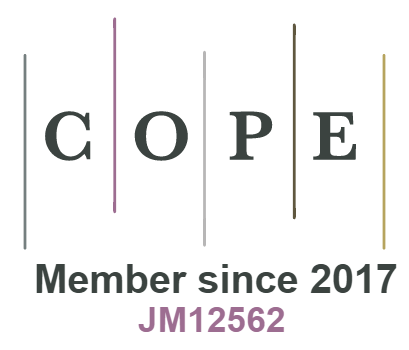Internet Banking Espousal in Bangladesh: A Probing Study
DOI:
https://doi.org/10.18034/ei.v1i2.211Keywords:
Internet banking, isolated banking, retail economic services, BangladeshAbstract
Internet banking (IB) is a distinctive banking improvement with the intention of potentially can convert the monetary services scenery in budding nations such as Bangladesh. Nevertheless, due to the connected near to the ground acceptance rate, its full potential in deepening and extending banking services is yet to be realized, as a decisive group of customers is yet to be accessed. As a result, a improved thoughtful of why some banking customers agree to IB and others do not, alongside a recognition of the factors influencing this choice is expected to be of significant realistic as well as intellectual value. For this ground, the rationale of this learning was to explore the factors influencing the approval and practice patterns of IB among Bangladeshi customers. Using Rogers’ IDT structure, data was composed by means of a self-completion questionnaire, in which some 249 banking clients participated. Findings propose perceptions of risk, lack of adequate support and training from banking institutions are some of the causes of non-usage. The implications of these conclusions are that banks possibly will centre extra concentration on cross-selling IB mutually with other financial commodities, as IB is hardly ever used in remoteness. Installing individual computers surrounded by branches in combination with campaigns and demonstrations might also get better rates of approval.
Downloads
References
Alam, S. H. And Others (2007). “Developments and prospects of internet banking in Bangladesh.” International Business Journal, Vol 17, No ½: 56-66.
Agarwal, R. and Prasad, J. (1998). "The antecedents and consequents of user perceptions in information technology adoption." Decision Support Systems, 22 (1998): 15-29.
Ajzen, I. (1991). "The Theory of Planned Behaviour." Organizational Behavior and Human Decision Processes, 50: 179-211.
Bandura, A. (1982). "Self-efficacy mechanism in human agency." American Psychologist, 37(2): 122-147.
Berger, S. (2009). "Self-service technology for sales purposes in branch banking: The impact of personality and relationship on customer adoption." International Journal of Bank Marketing, 27(7): 488-505.
Berndt, A. D., Saunders, S. G. and Petzer, D. J. (2010). "Readiness for banking technologies in developing countries." Southern African Business Review, 14(3): 47-76.
Black, N. J., Lockett, A., Winklhofer, H. and Ennew, C. (2001). "The adoption of Internet financial services: a qualitative study." International Journal of Retail & Distribution Management, 29(8): 390-398.
Blumberg, B., Cooper, D. R. and Schindler, P. S. (2011). Business Research Methods, 3rd European Edition. London, McGraw Hill.
Brown, I., Cajee, Z., Davies, D. and Stroebel, S. (2003). "Cell phone banking: predictors of adoption in South Africa - an exploratory study." International Journal of Information Management, 23: 381-394.
Calder, B. J., Phillips, L. W. and Tybout, A. M. (1981). "Designing Research for Application." Journal of Consumer Research, 8(2): 197-207.
Davis, D. (1989). "Perceived Usefulness, Perceived Ease of Use, and User Acceptance of Information Technology." MIS Quarterly, 13(3): 319-340.
Field, A. (2009). Discovering Statistics Using SPSS, 3rd Edition. Thousand Oaks, CA, Sage.
Ho, S. S. M. and Ng, V. T. F. (1994). "Risk Perceptions of Electronic Payment Systems." International Journal of Bank Marketing, 12(8): 26-38.
Maenpaa, K. (2006). "Clustering the consumers on the basis of their perceptions of the Internet banking services." Internet Research, 16(3): 304-322.
Malholtra, N. (2010). Marketing Research: An Applied Orientation, 6th Edition. Upper Saddle River, NJ, Pearson.
Meuter, M. L., Bitner, M. J., A.L, O. and Brown, S. W. (2005). "Choosing among alternative service delivery modes: an investigation of customer trial of self-service." Journal of Marketing, 69 (April 2005): 61-83.
Robertson, T. (1967). "The process of innovation and the diffusion of innovations." The Journal of Marketing, 31(1): 14.
Rogers, E. (1983). The Diffusion of Innovations, 3rd Edition. New York, The Free Press.
Rogers, E. (1995). Diffusion of Innovations, 4th edition. New York, The Free Press.
Rugimbana, R. (1998). Values, Perceptions, and Consumer Preference Patterns for Personal Banking Technologies in Australia and Malaysia, MacQuarie University. PhD Marketing.
Shambare, R. (2011). "Cell phone banking adoption in South Africa." Business and Economic Research, 1(1).
Shivers-Blackwell, S. L. and Charles, A. C. (2006). "Ready, set, go: examining student readiness to use ERP technology." Journal of Management Development, 25(8): 795-805.
South African Reserve Bank (2008). Annual Report: Bank Supervision Department. Pretoria, RSA, South African Reserve Bank.
Taylor, S. and Todd, P. (1995). "Decomposed and crossover effects in the theory of planned behaviour: A study of consumer adoption intentions." International Journal of Research in Marketing, 12(1995): 137-155.
Website: Bank Info: http://bankinfobd.com/blog/internet-banking-in-bangladesh
--0--
Published
Issue
Section
License
Engineering International is an Open Access journal. Authors who publish with this journal agree to the following terms:
- Authors retain copyright and grant the journal the right of first publication with the work simultaneously licensed under a CC BY-NC 4.0 International License that allows others to share the work with an acknowledgment of the work's authorship and initial publication in this journal.
- Authors are able to enter into separate, additional contractual arrangements for the non-exclusive distribution of the journal's published version of their work (e.g., post it to an institutional repository or publish it in a book), with an acknowledgment of its initial publication in this journal. We require authors to inform us of any instances of re-publication.









